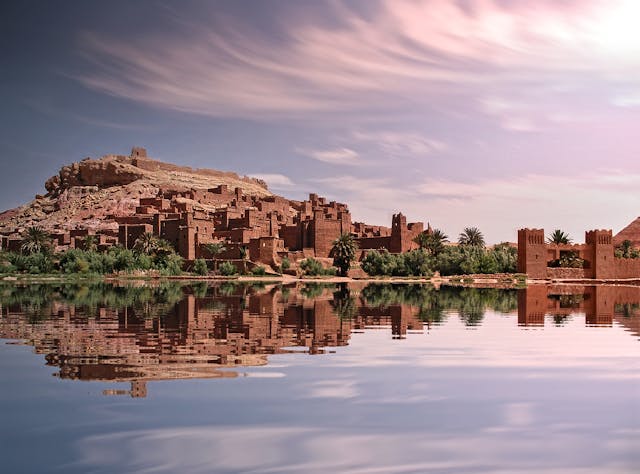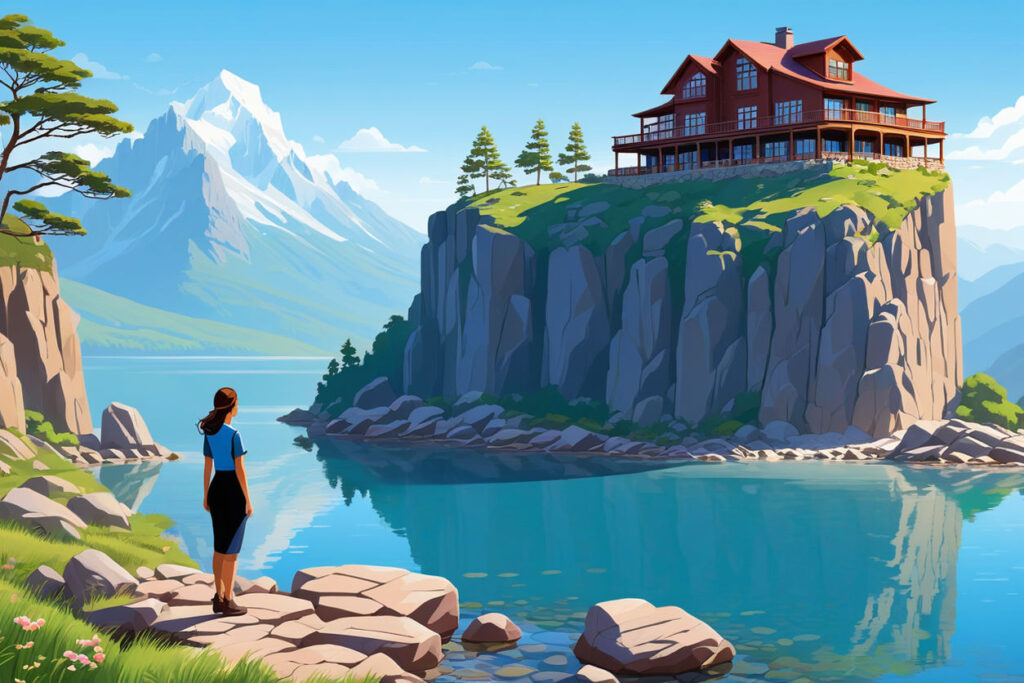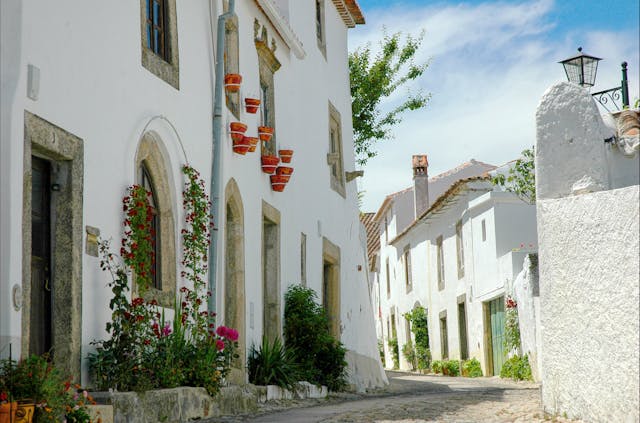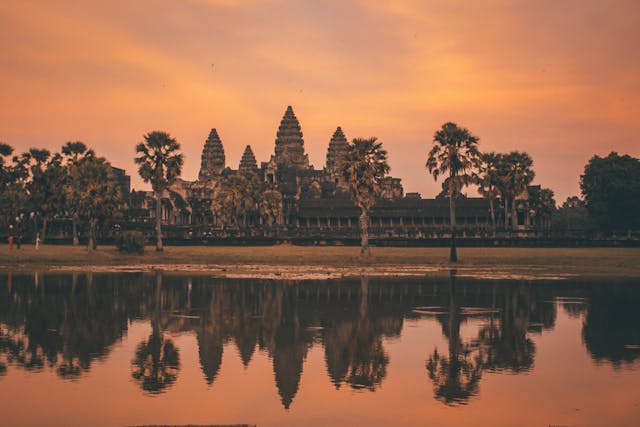Morocco offers a captivating mix of vibrant cities, stunning landscapes, and rich cultural experiences. If you’re planning a trip, a well-crafted Morocco itinerary can help you make the most of your visit. From the bustling markets of Marrakech to the serene sands of the Sahara, Morocco has something for every traveler.
Whether you’re short on time or looking for a more extended adventure, there’s an itinerary that fits your needs. In just a few days, you can explore historic medinas, majestic mountains, and picturesque coastal towns. For those with a week to spare, a longer itinerary allows for a deeper dive into Morocco’s diverse regions and experiences.

Each itinerary is designed to highlight the unique beauty and history of Morocco, ensuring a memorable journey through this enchanting country. Prepare to immerse yourself in the rich traditions, breathtaking scenery, and delicious cuisine that Morocco has to offer.
3-Day Morocco Itinerary
Day 1: Explore Marrakech
Begin your Moroccan adventure in Marrakech, a city known for its vibrant atmosphere and rich history. Start at the Djemaa el-Fna, the main square, which comes alive with street performers, food stalls, and local vendors. Wander through the souks, where you can find everything from spices to handcrafted textiles. Visit the Koutoubia Mosque, the largest mosque in Marrakech, and admire its impressive minaret.
In the afternoon, head to the Majorelle Garden, a stunning oasis created by French painter Jacques Majorelle. The garden is a peaceful escape from the city’s hustle and bustle, with its vibrant blue buildings and diverse plant life. Nearby, the Yves Saint Laurent Museum offers a glimpse into the fashion designer’s connection to Morocco.
End your day with a traditional Moroccan dinner. Try local dishes like tagine or couscous at a restaurant such as Le Comptoir du Relais. Relax and enjoy the lively ambiance of Marrakech by night.
Day 2: Day Trip to the Atlas Mountains
On your second day, take a break from the city and head towards the Atlas Mountains. The drive itself is a scenic journey, offering beautiful views of the changing landscape. Your destination is the Ourika Valley, a popular spot for hiking and experiencing rural Moroccan life.
Once you arrive, enjoy a hike to the Setti Fatma waterfalls. The trail offers stunning views and a chance to experience the natural beauty of the region. Afterward, visit a traditional Berber village to learn about local customs and enjoy a simple, authentic meal.
Return to Marrakech in the evening. If you have time, consider visiting a local hammam for a relaxing steam bath and massage, a traditional Moroccan experience.
Day 3: Discover Essaouira
For your final day, take a day trip to Essaouira, a coastal town known for its relaxed atmosphere and historic medina. The drive from Marrakech takes about two and a half hours, so start early to make the most of your visit.
In Essaouira, stroll through the medina and admire its blend of Portuguese, French, and Moroccan architecture. Visit the Skala de la Ville, an old fortification with views over the Atlantic Ocean. The town is also famous for its seafood, so be sure to enjoy a fresh fish lunch at one of the local restaurants.
Before heading back to Marrakech, take a walk along the beach or explore the city’s art galleries and shops. Return to Marrakech in the evening for your departure or for one last night in the city.
Summarized Itinerary
| Day | Activities |
|---|---|
| Day 1: Explore Marrakech | Visit Djemaa el-Fna, the souks, Koutoubia Mosque, Majorelle Garden, Yves Saint Laurent Museum, and enjoy a Moroccan dinner. |
| Day 2: Day Trip to the Atlas Mountains | Hike to Setti Fatma waterfalls, visit a Berber village, and return to Marrakech for a hammam visit. |
| Day 3: Discover Essaouira | Explore Essaouira’s medina, Skala de la Ville, enjoy fresh seafood, and return to Marrakech. |
Also read: 15 Best Beaches in Ecuador: Sun, Sand, Surf
5-Day Morocco Itinerary
Day 1: Marrakech Highlights
Start your 5-day trip in Marrakech. Follow a similar plan as in the 3-day itinerary, focusing on the Djemaa el-Fna, the souks, and the Majorelle Garden. In addition to these, visit the Saadian Tombs, an important historical site with beautifully decorated mausoleums. Also, explore the Bahia Palace, known for its stunning architecture and serene gardens.
Day 2: Atlas Mountains and Ouarzazate
On the second day, drive towards the Atlas Mountains, but extend your journey to include Ouarzazate, known as the gateway to the Sahara. Stop at Ait Benhaddou, a UNESCO World Heritage site famous for its ancient ksar, a traditional fortified village.
In Ouarzazate, visit the Taourirt Kasbah and learn about the region’s role in Moroccan history and cinema. Spend the night in Ouarzazate, where you can enjoy a quiet evening and local cuisine.
Day 3: Journey to the Sahara Desert
Travel from Ouarzazate to the edge of the Sahara Desert. Your destination is Merzouga, a village known for its proximity to the impressive Erg Chebbi dunes. The drive offers incredible desert landscapes and glimpses of traditional Moroccan life.
Once in Merzouga, take a camel trek into the dunes to watch the sunset. The experience of riding a camel and watching the sun dip below the sand is unforgettable. Spend the night in a desert camp, enjoying traditional music and a star-filled sky.
Day 4: Return to Marrakech
After a night in the desert, make your way back to Marrakech. The journey is long, so plan for a day of travel with occasional stops to break up the trip. Use this day to relax and enjoy the scenery.
Once you arrive in Marrakech, you might have time for a leisurely evening walk or a visit to a local café to unwind.
Day 5: Fes – The Spiritual Heart
On your final day, head to Fes, one of Morocco’s most historic cities. The drive from Marrakech takes about 7 hours, so plan to start early. In Fes, explore the ancient medina, a maze of narrow streets and bustling souks. Visit the Bou Inania Madrasa, a beautiful example of Islamic architecture, and the Al-Qarawiyyin Mosque, considered one of the oldest universities in the world.
In the evening, enjoy a traditional Moroccan meal in one of Fes’s charming riads.
Summarized Itinerary
| Day | Activities |
|---|---|
| Day 1: Marrakech Highlights | Explore Djemaa el-Fna, souks, Majorelle Garden, Saadian Tombs, and Bahia Palace. |
| Day 2: Atlas Mountains and Ouarzazate | Drive to the Atlas Mountains, visit Ait Benhaddou, and explore Ouarzazate’s Taourirt Kasbah. |
| Day 3: Journey to the Sahara Desert | Travel to Merzouga, camel trek into the Sahara, and stay overnight in a desert camp. |
| Day 4: Return to Marrakech | Travel back to Marrakech, relax, and enjoy the evening in the city. |
| Day 5: Fes – The Spiritual Heart | Travel to Fes, explore the medina, Bou Inania Madrasa, and Al-Qarawiyyin Mosque. |
7-Day Morocco Itinerary
Day 1: Arrival in Casablanca
Begin your 7-day journey in Casablanca, Morocco’s largest city. Visit the Hassan II Mosque, an architectural marvel with the world’s tallest minaret. Spend some time walking along the Corniche, a beachfront promenade with shops and restaurants. Enjoy dinner at a local restaurant and get a feel for the city’s vibrant nightlife.
Day 2: Rabat and Chefchaouen
Travel to Rabat, Morocco’s capital, and explore the Hassan Tower and the Mausoleum of Mohammed V. Wander through the old medina and enjoy the peaceful atmosphere of the Oudaias Kasbah.
In the afternoon, continue to Chefchaouen, the “Blue City,” known for its picturesque blue-painted buildings. Spend the evening exploring the charming streets and enjoy dinner in a local restaurant.
Day 3: Chefchaouen and Fes
Spend your morning in Chefchaouen, soaking in the serene atmosphere and taking photos of the blue-washed buildings. Visit the Kasbah Museum and the local markets.
In the afternoon, head to Fes. This drive will give you a glimpse of Morocco’s changing landscapes. Arrive in Fes in the evening and settle into your accommodation.
Day 4: Explore Fes
Dedicate this day to exploring Fes. Start with a visit to the Bou Inania Madrasa and the Al-Qarawiyyin Mosque. Walk through the medina’s maze-like streets and visit the famous tanneries. Enjoy lunch at a traditional restaurant and continue exploring the city’s rich history and culture.
Day 5: Meknes and Volubilis
Take a day trip to Meknes, a city known for its grand architecture and historical significance. Visit the Bab Mansour gate and the royal stables. Continue to the ancient Roman ruins of Volubilis, a UNESCO World Heritage site with well-preserved mosaics and ruins.
Return to Fes in the evening for a relaxed dinner.
Day 6: The Sahara Desert
Travel to Merzouga, the gateway to the Sahara Desert. The journey is long, so plan for a day of travel. Once you arrive, take a camel trek into the dunes to watch the sunset. Spend the night in a desert camp, enjoying traditional Moroccan hospitality and a night under the stars.
Day 7: Return to Marrakech
On your final day, make your way back to Marrakech. The drive takes most of the day, so enjoy the journey and use it to reflect on your Moroccan adventure. Once in Marrakech, you might have time for a final evening stroll or dinner in one of the city’s vibrant areas.
This 7-day itinerary covers some of Morocco’s most iconic destinations, offering a mix of cultural experiences, historical sites, and natural wonders.
Summarized Itinerary
| Day | Activities |
|---|---|
| Day 1: Arrival in Casablanca | Visit Hassan II Mosque, stroll along the Corniche, and enjoy a local dinner. |
| Day 2: Rabat and Chefchaouen | Explore Rabat’s Hassan Tower and Mausoleum, then travel to Chefchaouen and explore the blue city. |
| Day 3: Chefchaouen and Fes | Morning in Chefchaouen, then travel to Fes in the afternoon. |
| Day 4: Explore Fes | Visit Bou Inania Madrasa, Al-Qarawiyyin Mosque, and explore the medina. |
| Day 5: Meknes and Volubilis | Day trip to Meknes to see Bab Mansour and royal stables, then visit Volubilis ruins. |
| Day 6: The Sahara Desert | Travel to Merzouga, camel trek into the dunes, and spend the night in a desert camp. |
| Day 7: Return to Marrakech | Travel back to Marrakech, relax, and enjoy your final evening in the city. |
Practical Tips for Visiting Morocco
Traveling to Morocco is an exciting adventure, but being prepared can make your trip smoother. First, check visa requirements before you go. Many nationalities can enter Morocco without a visa for short stays. However, it’s always good to confirm the latest regulations.
When it comes to packing, Morocco’s climate can vary greatly, so bring layers. Lightweight, breathable clothing is essential for the hot days, but evenings can be cool, especially in the desert and the mountains. Comfortable walking shoes are a must as you’ll likely be exploring on foot.
Stay hydrated and use sunscreen to protect yourself from the sun. It’s also a good idea to carry a reusable water bottle. Although Morocco is generally safe for travelers, be cautious with street food and drink bottled water to avoid stomach issues.
Cultural etiquette is important in Morocco. Dress modestly, especially in rural areas and religious sites. It’s polite to greet people with “Salam Alaikum” (peace be upon you) and to use your right hand for eating and exchanging items. Tipping is customary in restaurants and for service providers.
Lastly, be aware of the currency exchange rates. The Moroccan Dirham (MAD) is the local currency, and it’s best to carry some cash, especially in smaller towns where credit card facilities may be limited. ATMs are widely available in cities.
Related: Punta Cana Excursions: Top 15 Best Adventures in Paradise
Morocco’s Culture and History
Morocco’s culture is a rich blend of influences from Berber, Arab, and French traditions. The country has been a crossroads of various civilizations for centuries, contributing to its unique cultural tapestry.
Historically, Morocco was a significant player in the trans-Saharan trade routes. Cities like Fes and Marrakech grew wealthy from trade and became centers of learning and culture. The architecture in Morocco reflects this heritage, with stunning examples of Islamic, Moorish, and traditional Berber designs. The intricate tile work, stunning palaces, and historic mosques tell stories of Morocco’s past.
Moroccan culture is deeply influenced by Islam, which shapes many aspects of daily life. Traditional festivals and celebrations are an integral part of Moroccan culture, with events like Ramadan, Eid al-Fitr, and the Festival of the Roses showcasing the country’s rich traditions.
The Berber people, indigenous to the region, have a strong presence in Morocco. Their influence is seen in the traditional music, crafts, and festivals. Moroccan cuisine is another significant part of the culture, known for its flavorful dishes and use of spices.
Food and Restaurants in Morocco
Moroccan cuisine is a delightful journey of flavors and textures. At the heart of Moroccan cooking is the tagine, a slow-cooked stew made with meat, vegetables, and spices. The name also refers to the earthenware pot in which it’s cooked. Other popular dishes include couscous, a steamed semolina served with meat and vegetables, and pastilla, a savory-sweet pie made with pigeon or chicken and almonds.
Street food is also a major part of the culinary experience in Morocco. Be sure to try local favorites like grilled kebabs, harira (a rich soup often eaten during Ramadan), and delicious pastries like chebakia, a honey-sesame treat.
In Marrakech, visit Le Comptoir du Relais for a classic Moroccan meal in a lively setting. For a more upscale dining experience, consider Restaurant Al Fassia, known for its refined Moroccan dishes. In Fes, the Riad Fes Restaurant offers a great setting and traditional fare, while in Casablanca, try Rick’s Café for a blend of Moroccan and international dishes in a charming atmosphere.
When dining out, remember that Moroccan meals are often a social event. It’s customary to share dishes, so be prepared for a communal dining experience.
Also read: Top 15 Exciting Day Trips From Havana for Every Traveler
Transportation in Morocco
Getting around Morocco can be an adventure in itself, with several options available depending on your destination and budget.
For city travel, taxis are readily available. In larger cities, you can use petit taxis for short trips within the city and grand taxis for longer distances. It’s a good idea to agree on the fare before starting your journey or ensure the meter is running.
Public buses are another option for traveling between cities and towns. Companies like CTM and Supratours offer comfortable and reliable services. For a more adventurous experience, consider taking a train. The Moroccan rail network is extensive, connecting major cities and offering scenic routes, especially through the Atlas Mountains.
If you’re traveling to more remote areas, renting a car can give you the flexibility to explore at your own pace. Be aware that driving in Morocco can be challenging due to the traffic and road conditions, so ensure you’re comfortable with local driving practices.
In the desert regions, camel treks are a popular way to experience the sand dunes and traditional nomadic life. Many tours offer camel rides and overnight stays in desert camps, providing a unique way to experience the Moroccan landscape.
Conclusion
A well-planned Morocco itinerary ensures that you experience the country’s diverse offerings, from the vibrant city life to the tranquil desert landscapes. By following these practical tips, understanding Morocco’s rich culture and history, savoring its delicious cuisine, and navigating its transportation options, you’ll be well-prepared for an unforgettable journey.
Whether you have a few days or a week, Morocco’s charm and allure will make your visit truly memorable.
FAQ: Morocco Itinerary
What are the main highlights of a Morocco itinerary?
A Morocco itinerary typically includes vibrant cities like Marrakech and Fes, stunning landscapes such as the Atlas Mountains and Sahara Desert, and cultural experiences like traditional Moroccan cuisine and historic sites.
How many days should I spend in Morocco?
It depends on what you want to see. A 3-day itinerary focuses on major highlights, a 5-day itinerary allows for a deeper exploration including the desert, and a 7-day itinerary provides a more comprehensive experience, covering cities, mountains, and coastal areas.
What should I pack for a trip to Morocco?
Pack lightweight, breathable clothing for hot days, warm layers for cooler evenings, comfortable walking shoes, and sun protection like sunscreen and a hat. Also, bring a reusable water bottle and modest clothing for cultural sites.
Is Morocco safe for tourists?
Yes, Morocco is generally safe for tourists. However, exercise standard travel precautions such as avoiding isolated areas at night, being cautious with street food, and respecting local customs.
What currency is used in Morocco?
The currency used in Morocco is the Moroccan Dirham (MAD). It’s advisable to carry some cash, especially in smaller towns, though credit cards are widely accepted in cities.
How can I get around Morocco?
Options include taxis, public buses, trains, and rental cars. For city travel, taxis are convenient. For intercity travel, consider buses or trains. Renting a car is useful for exploring remote areas, but driving conditions can be challenging.
What are some must-try Moroccan dishes?
Try traditional dishes such as tagine (slow-cooked stew), couscous, pastilla (savory-sweet pie), and street foods like kebabs and harira (soup). Moroccan pastries, like chebakia, are also a treat.
When is the best time to visit Morocco?
The best time to visit is spring (March to May) and fall (September to November) when the weather is mild. Summer can be very hot, especially in desert areas, while winter can be cold, particularly in the mountains.
Things to do in Morocco

|
10 Days in Morocco: Southern Morocco Nature, Morocco Coast – $2,217.47 Experience southern Morocco’s highlights, including a Sahara camel trek and a night under the stars, with a refreshing stop at Tifnit Beach and Essaouira. |

|
15 Days in Morocco: South Morocco Adventure – $4,434.94 Wander artsy Asilah, traverse the Atlas Mountains, enjoy a camel trek, and explore Fes and Essaouira on this two-week adventure. |

|
7 Days in Morocco: Luxury Tour in Northern Morocco – $3,242.98 Enjoy a luxurious tour of Morocco’s Imperial Cities with a private driver, guided tours, and stays in top-tier riads and hotels. |

|
Morocco Cultural Tour – Discover Culture, Arts, and Crafts – $1,639.29 Delve into Morocco’s culture with visits to sacred places, traditional markets, and experience local cuisine and crafts. |

|
10D 9N Morocco Tour: Imperial Cities and Merzouga Desert – $1,617.21 Explore Morocco’s Imperial Cities, the Erg Chebbi desert, and stunning landscapes with visits to historic medinas and mountain villages. |
This blog post may contain affiliate links. If you click on one and make a purchase, I may earn a small commission at no extra cost to you.



